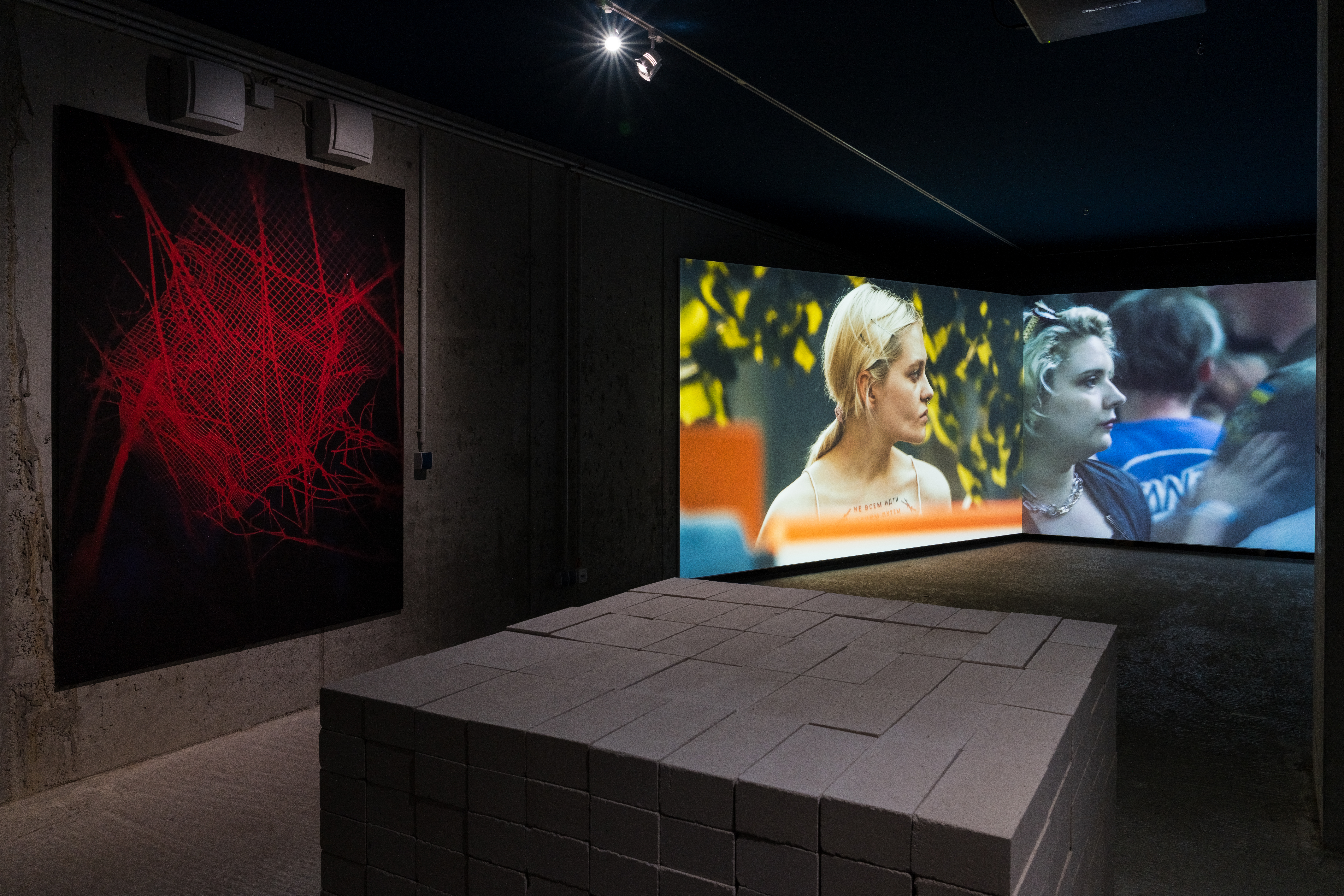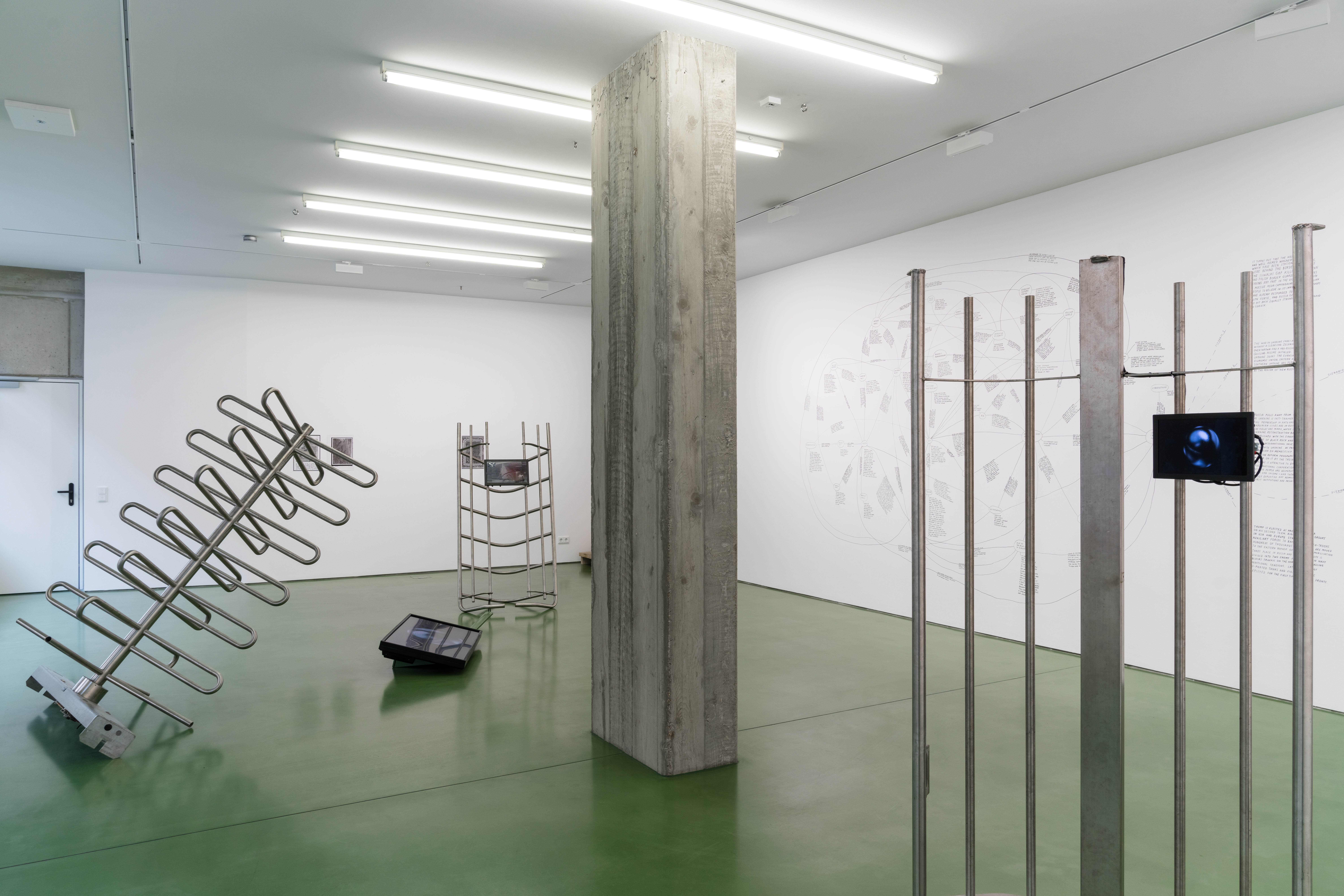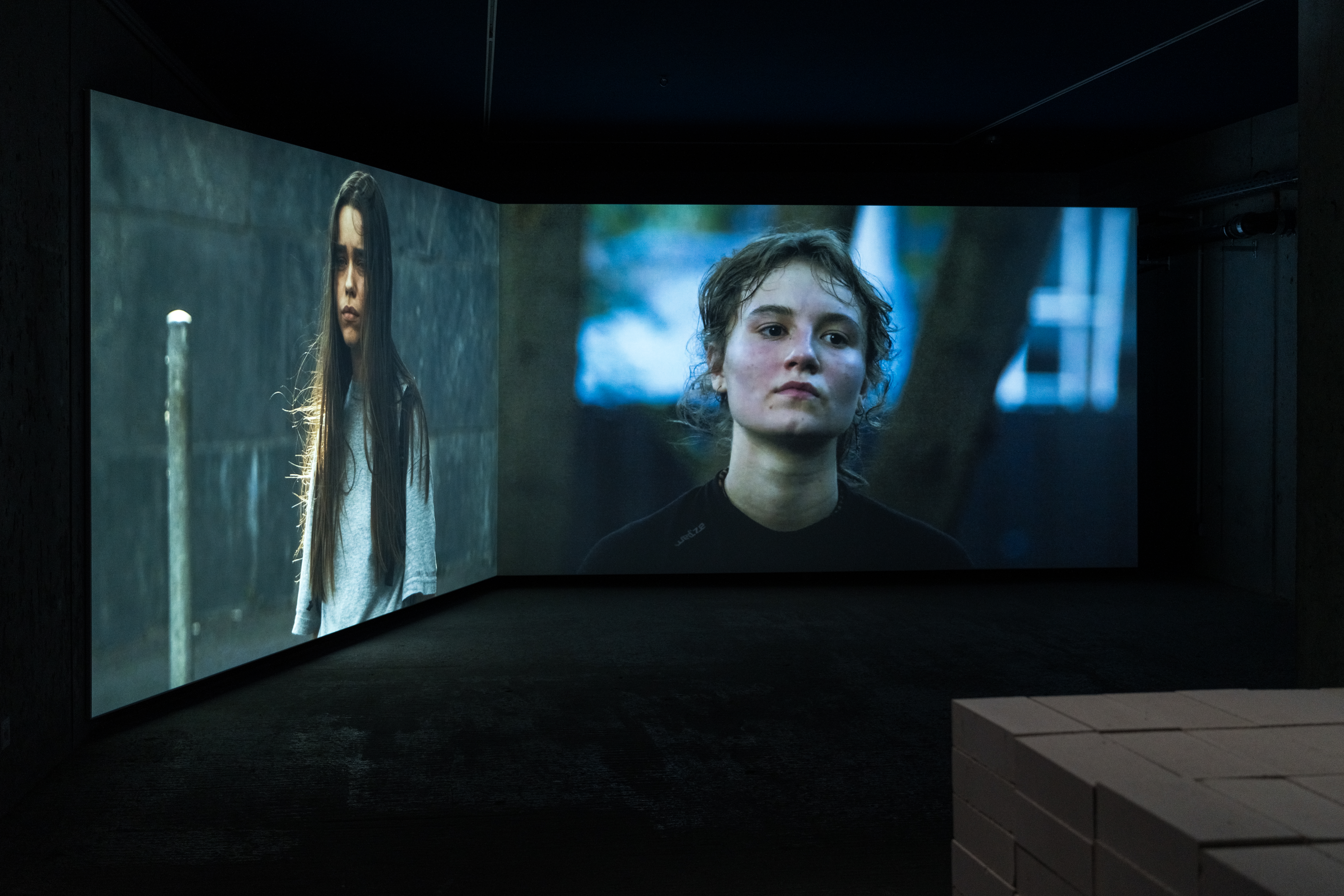ZMINA: Rebuilding | Ukrainian curator Serge Klymko: “We are in an extended 24 February, which has started and endures, and you see no point where it can stop.”

The exhibition project ‘A Time in Pieces’ was created for the Kyiv Perennial event - the Berlin version of the 5th Kyiv Biennale, which was reimagined as a collaborative project based on political, social and cultural survival. The exhibition was the final stage of the Kyiv Perennial project. It ran from 24 May to 27 July 2024 in Berlin. We talked to the exhibition's co-curator, Serge Klymko, about the preparation for the exhibition, the fragmentation of time, and the audience's reactions.
How did the idea for the exhibition come about?
I was thinking about the perception of time during the war since 2022. I remember the feeling that we all had that 24 February was going on forever. Now it may have changed a bit. But last summer we felt that we were still captured in an extended 24 February, that it started and lasts forever and there is no point where it can stop, and that you are in the infinite now, frozen in it. This is especially true for people who are in quite difficult circumstances
It's a state where you are trapped in a situation where you can't imagine the future, you don't have the strength to think about the future and you can't imagine anything beyond the present. I wanted to convey this state, which absorbed Ukrainians for at least a few years.
exhibition's co-curator, Serhii Klymko
Could you tell us about the process of selecting the artists?
We wanted to initiate a collaboration between European and Ukrainian artists, to ask them to reflect together on this moment in time, on continuity. But in a given framework, also timewise, it turned out to be difficult to align the backgrounds and perspectives. With one notable exception of Minna Henriksson from Finland, whose artistic practice engages with themes of time and history. She created a timeline from the end of the Second World War to the present day, exploring the unfolding of political processes in Eastern Europe and the historical and political framework of the region before and after the invasion, as well as potential future prospects.

How did the artists work with the image of time being torn and fragmented in their works?
Among the new works presented was Chronosphere by Lesia Vasylchenko. This piece is a film divided into eight sections, each exploring the concept of temporal fragmentation from a distinct perspective. The sculptural elements of this installation are composed of repurposed frames reminiscent of those found in airport settings. These frames function as "screamers," regulating access and thereby creating a fragmented spatial experience. The conceptual framework of the installation is predicated on the notion of a fractured, disjunctive space-time continuum, which is torn, scattered, and whose reconstitution is not immediately apparent.
The sculptural elements of this installation are composed of repurposed frames reminiscent of those found in airport settings. These frames function as "screamers," regulating access and thereby creating a fragmented spatial experience. The conceptual framework of the installation is predicated on the notion of a fractured, disjunctive space-time continuum, which is torn, scattered, and whose reconstitution is not immediately apparent.
Ihor Okuniev also presented a new work, strongly connected to the notion of going through time, a particular dimension of time. A photo of an antidrone grid, which represents an expectation, a certain obstacle, a defence that can be attacked at any time, and you never know when.. You are also trapped into a situation of an indefinite awaiting.
Did the artists respond to an open call, or did you find the artists yourself?
No, we don't usually make open calls; these are works and artists that we wanted to work with. We based our choices on certain existing works. And of course some of the works we tried to select were unavailable.
The exhibition was part of a larger project called Kyiv Perennial, how did it work with the overall concept of the Biennial?
This exhibition marked the culmination of the project. The Biennial commenced in the autumn of the 23rd year and concluded with this exhibition in the summer of the 24th year. Consequently, it may be regarded as a protracted Biennale, characterised by its uninterrupted continuation.
This project was also carried out in cooperation with Between Bridges and the DAAD Artists-in-Berlin Program. How did international interaction influence the realisation of the exhibition?
It was a perfect interaction. You rarely encounter something like that, when everything is so smooth and friendly. It was a pleasant surprise.
We curated this exhibition together with Victor Newman, curator at the Between Bridges, - it was a constant dialogue, and it was very productive in the sense that many things we have formulated together from different perspectives and experiences. It was a dialogue between Ukraine and Europe; we tried to find some points that would be understandable to a foreign audience and, at the same time, adapt the Ukrainian context. With an aim to produce an international message out of it. It was very productive.
exhibition's co-curator, Serhii Klymko
You mentioned that this cooperation was perfect; how exactly did it manifest itself?
In a friendly atmosphere of cooperation, when the institution is interested in the project. There was no feeling that this was just another project that needed to be finished quickly and moved on to another, to serve this punishment with work. There was a sense of excitement. We worked on the project with intensity, together, and I lived at Between Bridges during almost the whole project. It helped a lot because I was in the process and dialogue with the artists, the co-curator, and the production team. It was both convenient and productive.
And DAAD kindy supported the artists with scholarships, provided space and co-curated public program. It was also an exemplary cooperation.
How long did it take to prepare for the exhibition itself?
We started in February, and it was a very active preparation from about March.
How did the audience react to the exhibition?
There was a feedback book in the space which collected a lot of touching and thoughtful responses, so in general, it was a very positive reaction, but of course, for some visitors, it was a rather traumatic experience.
The exhibition had a sad and melancholic atmosphere of a frozen February where you don't see any bright prospects, and the feeling that it couldn't be eliminated. And the works conveyed this quite effectively.
exhibition's co-curator, Serhii Klymko
Was there a difference in the perception of Ukrainian and foreign audiences?
I think so, of course, because for the Ukrainian audience, it is a familiar reality, and there is no conceptual barrier that you have to overcome to really understand the context. But the attentive Berlin audience understood everything. There were no complicated conceptual works, the exhibition was quite open and clear. Although we also tried not to make a documentary exhibition, not to make a direct approach to the events, but rather to show an artistic reflection and an attempt to convey empathic and intimate experience.

Did you face any difficulties during the creation of the exhibition?
Difficulties were more time related. When there is a time frame, a deadline, and you have to meet it. And usually, because we mostly worked with artists at a distance, it was not easy to coordinate.
Do you see this topic developing in your future projects?
Unfortunately, this topic is still not exhausted, so it will continue to appear and develop. We will work and are already working on the next project with at least a half of the artists who took part in A Time in Pieces exhibition.
What topics do you plan to cover this year?
Thematically, we are currently working on a conceptual framework that will work with the concept of the horizon, including the time horizon. The horizon as some unfulfilled expectations or expectations that have not yet come true. Thematically, it will be related to the previous project, but it's hard to say how it will work out.
Author: Anna Siedykh
ZMINA: Rebuilding is a project co-funded by the EU Creative Europe Programme under a dedicated call for proposals to support Ukrainian displaced people and the Ukrainian Cultural and Creative Sectors. The project is a cooperation between IZOLYATSIA (UA), Trans Europe Halles (SE) and Malý Berlín (SK).